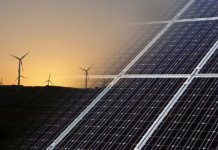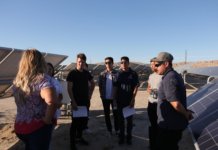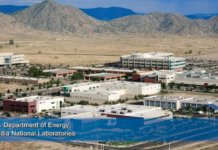Despite having what its executives call a “solid” second quarter, U.S.-based SunPower has announced plans to streamline its operations and close a panel assembly facility in the Philippines. Interestingly, the vertically integrated solar company cites last year’s extension of the federal investment tax credit (ITC) in the U.S. as one of several solar industry challenges.
“Our second-quarter execution was solid as we met our financial targets and achieved key milestones across the company,” says Tom Werner, SunPower president and CEO, in a company announcement. He notes that SunPower saw strong demand for a variety of its solutions during the quarter, including its recently launched Equinox and Helix products, and completed project deals across different markets.
“However, while the long-term fundamentals for solar power remain strong, we see a number of near-term industry challenges, primarily in our power plant segment, that we expect to impact our business and financial performance in the second half of 2016,” says Werner.
“The extension of the investment tax credit, as well as the bonus depreciation credit, while beneficial to the long-term health of the industry, has reduced the urgency to complete new solar projects by the end of 2016, with many customers adopting a longer-term timeline for project completion,” he explains.
Raj Prabhu, CEO and co-founder of clean energy communications and consulting firm Mercom Capital Group, isn’t surprised by the unintended consequences the ITC extension has had on the overall solar industry.
“We at Mercom have been forecasting conservative U.S. solar growth in 2016 since the ITC extension last December, as our channel checks have indicated some projects being postponed to later dates due to the absence of a pressing deadline. Following the ITC extension, there were many aggressive forecasts – in the 15 GW to 16 GW range – without taking into account that project timelines may get moved. Companies staffed up and increased capacities to handle a much larger demand, and many are now cutting back and realigning their strategies to match the realities on the ground.”
He continues, “Most U.S. players across the supply chain will likely be adversely affected by this, especially downstream – residential, commercial and large-scale projects. Even so, the U.S. market will still grow at a healthy rate, but just not as fast as everyone thought it would.”
SunPower’s Werner also points to other market challenges.
“Additionally, near-term economic returns have deteriorated due to aggressive [power purchase agreement] pricing by new market entrants, including a number of large, global independent power companies,” he says. “We are also seeing customer project [internal rates of return] rising in the near term as buyers have increased their hurdle rates due to industry conditions. Finally, the continued market disruption in the yieldco environment has impacted our assumptions related to monetizing deferred profits.”
Regarding that last point about yieldcos, Prabhu reiterates what Mercom has said in the past: “SunEdison’s bankruptcy in April has added to the overall investor skepticism of yieldcos and solar public companies, in general. This negative perception has affected other yieldcos.”
SunPower formed a yieldco, 8point3 Energy, with First Solar last year.
To face all of the aforementioned challenges, Werner says SunPower will restructure its power plant business and refocus investment on distributed generation.
“We intend to focus our development resources on a limited number of core markets, primarily in the Americas, where we believe we have a sustainable competitive advantage and a project pipeline of over 9 GW,” he states. “We also plan to delay the timing of certain projects in our 2016 and 2017 pipeline to take advantage of planned cost-reduction efforts over the next two years.”
As part of the streamlining efforts, SunPower is closing its Philippine module assembly facility and moving the plant’s equipment to company facilities in Mexico. “This change will optimize our supply chain and move final panel assembly closer to our key markets,” says Werner.
In its announcement, the company also says it will cut its workforce by about 15% – or, 1,200 workers – but notes most of the layoffs will be due to its shuttered Philippine plant.
“Our solid second-quarter performance reflects the benefits of our diversified go-to-market strategy,” says Chuck Boynton, SunPower’s chief financial officer. “Our balance sheet remains strong, as we exited the quarter with more than $590 million in cash. Looking forward, we believe our realignment plan will enable us to expand our leadership position in distributed generation, further strengthen our presence in our core power plant markets, improve cashflow and lower our annual operating expenses by up to 10 percent.”
Certainly, other large companies across many sectors have had to streamline their operations at one point or another as a result of market conditions – so, will SunPower recover in the long term and maintain its position in the global solar industry, or is this the sign of a proverbial sinking ship?
“SunPower’s plant closing, relocation to Mexico and layoffs are restructuring efforts to address the short-term issues of slowing growth in the project-development business,” says Prabhu. “However,” he emphasizes, “this development is not a reflection of the company’s long-term prospects.”




